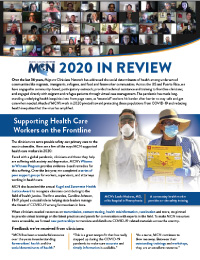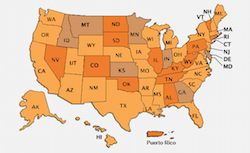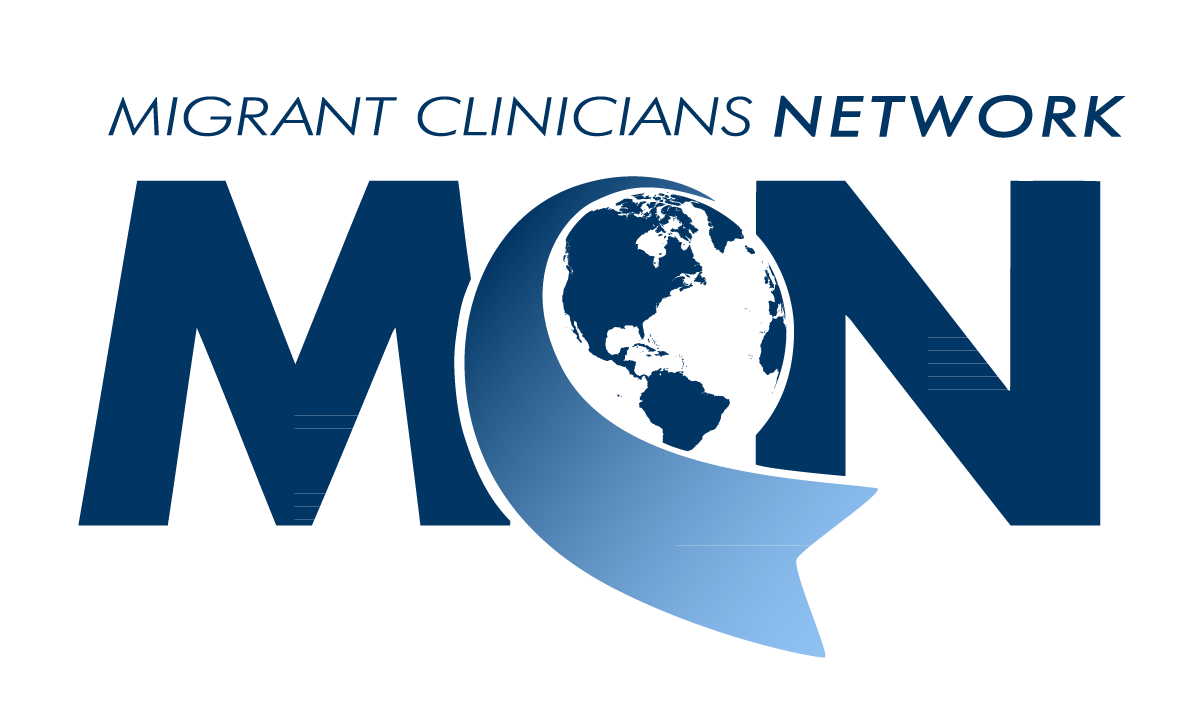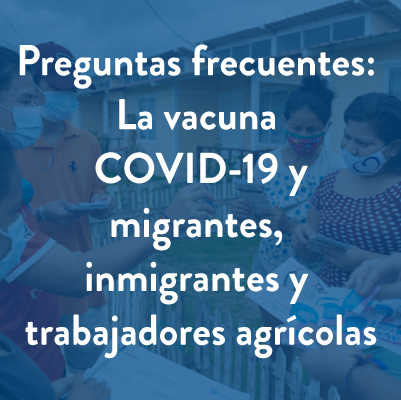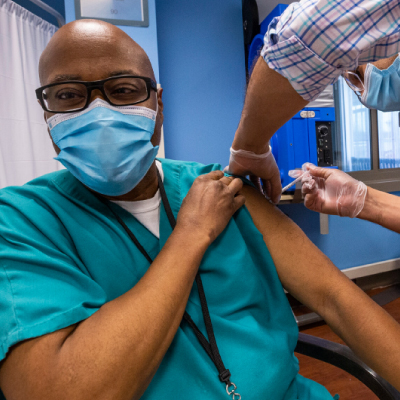- Who We Are
- Clinician Employment
- Publications
- Witness to Witness (W2W)
- El Premio Kugel & Zuroweste a la Justicia en la Salud
- Your Voice Matters: Photovoice Project
Thu, 11/19/2020 | by Ashley-Michelle...

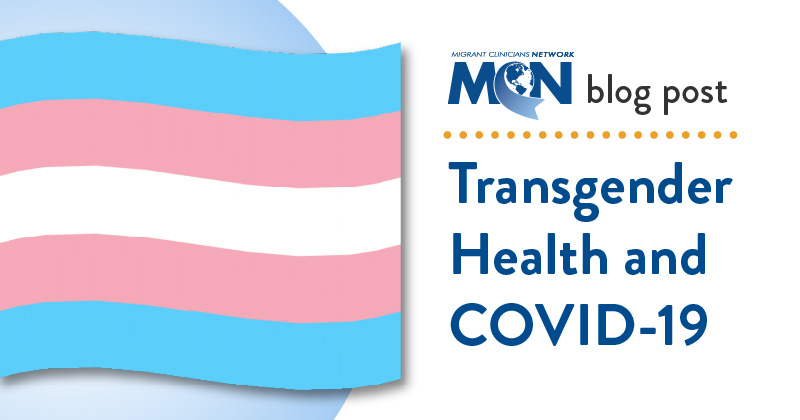
By Ashley-Michelle Papon, Project Coordinator, Development and Outreach
[Editor’s Note: Today is Transgender Day of Remembrance. Too many people have died because of violence against trans people, and many more struggle with poor health as a result of lack of access to trans-competent health care. In this blog post, MCN’s Ashley-Michelle Papon discusses the health barriers that many trans people in the US face, including trans migrants and trans in detention.]
More than eight months after the Coronavirus first emerged in the public awareness as an impending health crisis, vulnerable populations continue to struggle against a climate of misinformation and denial. While the body of work concerning the disparate impact on communities of color and the poor continues to grow, considerably less has been written concerning the vulnerability risk involving transfolx. Although that risk continues to climb, some hope may yet be on the horizon.
Earlier this year, the Trump Administration eliminated federal protections designed to prohibit trans-specific discrimination in health care within the Affordable Care Act, a move that has had disastrous consequences for a group that historically has faced systemic hurdles in accessing quality and affirming health care in the first place. Numerous studies have concluded that the lack of equitable access to providers competent in trans-specific health constitutes the biggest barrier for health care among the trans community.
Gender-affirming health care is in particularly short supply for trans detainees under the Trump Administration. Despite releasing a memorandum concerning the treatment of trans detainees that included honoring their stated gender identity by housing them in the appropriate gender facilities in 2015, the Immigration and Customs Enforcement (ICE) abruptly reversed course in 2017. Even the subsequent opening of the Cibola County Correctional Center, a detention facility intended to house trans inmates, failed to adequately address the needs of the specific population. A report released by the watchdog group Human Rights Watch argued that, even at trans-specific correctional facilities, detainees were subject to abuse, including an inability “to access necessary medical services, including hormone replacement therapy, or have faced harmful interruptions to or restrictions to that care.”
Transfolx who are not migrating already face significant barriers to accessing care, although solutions are also becoming apparent. Last year, before the Coronavirus became a household name, Lux Alptraum wrote a detailed piece for Medium, arguing that telemedicine provides the best hope of obtaining “medical care that acknowledges and provides support for transgender people’s gender identities.”
Unfortunately, obtaining quality care has always been a question of accessibility for transfolx, particularly as it relates to care that practices trans competency and gender affirmation. A 2015 survey conducted by the National Center for Transgender Equality found that one-third of all trans respondents encountered hostility in health care from their providers, from a lack of competence related to trans issues to an outright denial of care. This reality for many trans individuals had a chilling effect on their willingness to search out other care options; the same survey reported that close to a quarter of respondents chose not to pursue needed care due to the fear of being harmed.
Yet with the increased risk cause by the pandemic is also the hope of permanently changing health care for transfolx. Telehealth, previously a limited implementation for individuals blessed with private insurance, has become a necessary staple in a world gripped by the necessity of physical distancing. The sudden explosion of telehealth availability can be credited to the Trump Administration—despite targeting trans protections for repeal, the administration’s March 30 decision to remove the requirement of in-person visits allowed providers to receive reimbursement through the Centers for Medicare & Medicaid Services, which provides trans patients greater health care access.
In addition to allowing providers to work toward flattening the curve while decreasing the contagion risk for themselves and their patients, the move has also represented a boon to trans individuals residing in the United States. Typically, providers with working knowledge of trans-related health care are located in urban centers around the United States, leaving rural-dwelling transfolx grappling with considerable travel expense and related concerns, including transportation access and greater time commitment. The Movement Advancement Project found that 43 percent of transfolx reside in rural areas and travel at least 50 miles one way to obtain trans-specific health care.
The cost to receive treatment can be staggering, as transfolx are already at an increased risk for poverty and homelessness, two groups that are particularly vulnerable to illness. Prior to the pandemic, close to 700,000 trans adults living in the United States survived on an annual income of less than $26,000. Similarly, the unemployment rate for trans people in the US hovered around 13 percent, more than three times the national average. As the pandemic continues, the rate has jumped even higher, with close to 22 percent of trans individuals who identify as being of color experiencing job loss in the United States. These fiscal realities generate considerable limitations, particularly in managing the COVID-19 risk.
At the same time, this critical care has never been so necessary. Approximately 1.4 million people in the United States self-identify as members of the trans population, according to the US Transgender Population Health Survey conducted between 2016 and 2018. Unfortunately, this population is disproportionately at risk for catching COVID-19 across a variety of sociocultural and socioeconomic landscapes, including an increased likelihood of cigarette smoking or wearing binders, clothing accessories designed to restrict the presentation of breast tissue for trans masculine people that may also prolong COVID complications.
According to the Williams Institute at the University of California, Los Angeles School of Law, in addition to HIV, approximately 319,800 of the self-identified trans adults in the US grapple with asthma, diabetes, heart disease, or a combination of two or more of these conditions. Each of these carries with it the risk of complicating recovery from respiratory illness, the hallmark of COVID-19’s destructive presence in the body.
This means that the health care community intended to serve the trans population is facing some serious problems in its ability to dispense needed care to a vulnerable populous. Fortunately, a number of changemakers are working to deliver solutions that merge accessibility with innovation and ethics. One such out-of-the-box approach is Plume, a subscription-based app that caters exclusively to helping trans individuals network with trans-competent providers in 20 states. Plume, founded by Soltan Bryce, a trans man, also features an almost entirely trans staff, including physician Schuyler Bailar. Plume’s care team works to coordinate medical evaluations, lab work, referrals, and prescriptions related to hormone replacement therapy. While not every trans person chooses to utilize hormone replacement therapy (HRT), approximately 80 percent of the trans population does. Because HRT is a lifelong commitment, interruption of the hormones can be incredibly harmful and disruptive to baseline health.
While Plume is a unique fusion of accessibility and competent care, the trends suggest more accessibility options are coming. Already present are QueerDoc and QueerMed, two independent telemedicine clinics centering the health needs of queer-identifying patients. Regional centers, such as QDoc, serving the Pacific Northwest and The Sheridan Community Clinic in Colorado, are also on the rise.
Even though these options are unlikely to be made available to trans detainees and migrants any time soon, that they are available represents a significant advantage in the battle against COVID-19, and is a monumental step forward for trans people in the United States.
Like what you see? Amplify our collective voice with a contribution.
Got some good news to share? Contact us on our social media pages above.
Return to the main blog page or sign up for blog updates here.
